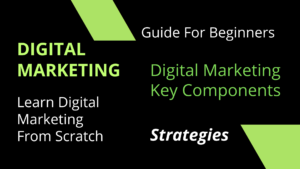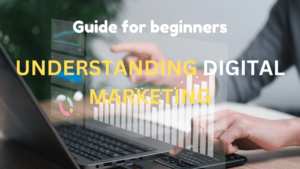On-page SEO is the foundation of any successful website. If you’re not optimizing your pages for search engines, you’re leaving traffic on the table. In this guide, we’ll walk you through the ultimate on-page SEO checklist for 2025, covering everything from meta tags to page speed.
Let’s dive in!
What is On-Page SEO?
On-page SEO refers to the practice of optimizing individual web pages to rank higher in search engines. Unlike off-page SEO (e.g., backlinks) or technical SEO (e.g., site speed), on-page SEO focuses on elements like content, headers, and meta tags. By following this checklist, you can improve your rankings, attract more organic traffic, and provide a better experience for your visitors.On-page SEO is the foundation of any successful website. For a deeper dive, check out Google’s official SEO starter guide.
Why is On-Page SEO Important?
Did you know that 75% of users never scroll past the first page of search results? On-page SEO ensures your website is visible to these users. It also improves user experience, mobile-friendliness, and page speed, all of which are critical for rankings. Whether you’re a blogger, small business owner, or marketer, this checklist will help you stay ahead of the competition.
If you’re just starting out, our beginner-friendly SEO guides can help you master the basics.
On-Page SEO Checklist for 2025
Here’s your step-by-step guide to mastering on-page SEO in 2025. Follow these tips to optimize your website and boost your rankings.
1. Optimize Title Tags
Your title tag is one of the most important on-page SEO elements. It tells search engines and users what your page is about.
- Keep it under 60 characters to avoid truncation in search results.
- Include your primary keyword (e.g., “on-page SEO checklist”) naturally.
- Make it compelling to improve click-through rates.
Example: Instead of “SEO Tips,” use “The Ultimate On-Page SEO Checklist for 2025.”
2. Write Compelling Meta Descriptions
While meta descriptions don’t directly impact rankings, they improve click-through rates.
- Keep it under 160 characters.
- Include your primary keyword and a call-to-action (CTA).
- Write a concise summary that entices users to click.
Example: “Struggling with on-page SEO? Use this ultimate on-page SEO checklist for 2025 to optimize your website and boost rankings.”
3. Use Header Tags (H1, H2, H3) Properly
Header tags help search engines understand your content’s structure.
- Use H1 for the main title (only once per page).
- Use H2 for section headings and H3 for subheadings.
- Include keywords naturally in your headers.
Example:
- H1: The Ultimate On-Page SEO Checklist for 2025
- H2: Why is On-Page SEO Important?
- H3: Optimize Title Tags
4. Optimize URL Structure
A clean URL structure improves both SEO and user experience.
- Keep URLs short and descriptive.
- Include your primary keyword (e.g., /on-page-seo-checklist).
- Use hyphens to separate words.
Example: Avoid yourwebsite.com/page123 and use yourwebsite.com/on-page-seo-checklist instead.
5. Add Internal Links
Internal linking helps search engines crawl your site and improves user experience.
- Link to related pages (e.g., “SEO tips for beginners”).
- Use descriptive anchor text (e.g., “Check out our guide to keyword placement“).
- Avoid overloading your content with links.
6. Optimize Images with Alt Text
Images make your content more engaging, but they need to be optimized for SEO.
- Use descriptive alt text that includes your keyword.
- Compress images to improve page speed.
- Use relevant file names (e.g., on-page-seo-checklist-infographic.jpg).
Example: Alt text: “Infographic showing the ultimate on-page SEO checklist for 2025.”
7. Improve Content Quality
High-quality content is the backbone of on-page SEO.
- Write for users, not just search engines.
- Include your primary keyword naturally (1-2% keyword density).
- Use bullet points, short paragraphs, and visuals to improve readability.
Tip: Tools like Grammarly and Hemingway can help you refine your content.
8. Ensure Mobile-Friendliness
With over 60% of searches happening on mobile, your site must be mobile-friendly.
- Use responsive design to adapt to different screen sizes.
- Test your site with Google’s Mobile-Friendly Test.
- Ensure buttons and links are easy to tap.
9. Improve Page Speed
Page speed impacts both rankings and user experience.
- Compress images and use lazy loading.
- Enable browser caching and minimize CSS/JavaScript files.
- Use tools like Google PageSpeed Insights to identify and fix issues.
Example: Aim for a loading time of under 3 seconds.
10. Add Schema Markup
Schema markup helps search engines understand your content better.
- Use structured data for articles, FAQs, and reviews.
- Tools like Google Structured Data Markup Helper make it easy to add schema.
- Schema markup can improve your chances of appearing in rich snippets.
Example: Add FAQ schema to your checklist for better visibility.
Downloadable On-Page SEO Checklist
Want to save this guide for later? Download our free on-page SEO checklist PDF and keep it handy while optimizing your site! This checklist includes all the tips mentioned above, plus bonus tips for advanced users.
Conclusion
By following this on-page SEO checklist, you can improve your website’s rankings, attract more organic traffic, and provide a better experience for your visitors. Start optimizing today!
For more tips and resources, explore more SEO resources on our homepage.




